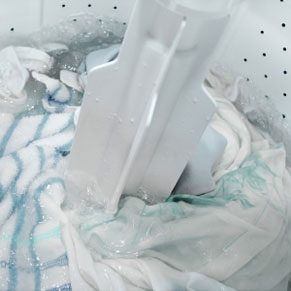
We demand a lot of our appliances these days. Go a little easier on these hard-working machines and you’ll spend less on maintaining, or replacing them.
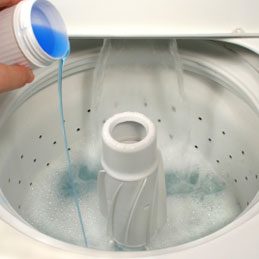
Washing machine
Some washer parts are easy to replace, but a chipped or cracked inner tub can sound the death knell for your machine. The exposed metal will rust-and keep rusting-and the rust will spot your clothes and linens. The cost of the new tub plus labor to install it makes this repair prohibitively expensive.
Bonus tip: Overloading your washer may not ruin it, but it will create wear and tear on certain parts that glide and spin, making these parts fail prematurely and forcing you to call the repairman or fix it yourself. Be sure to always follow the manufacturer’s suggestions for load size.
Repairman’s tip:
Never wash anything with heavy metal fasteners.
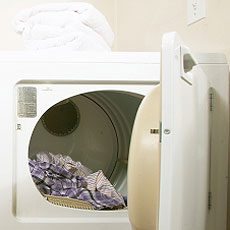
Clothes dryer
When the typical 12-pound (5.5-kg) load of laundry comes out of the washer, it contains a half-gallon (2 liters) of water. The dryer’s job, of course, is to remove the water. It heats the clothes, converting water to water vapor and forcing it out of the dryer (and the house) through the exhaust vent, along with lint. Dryers are designed to push this lint-laden wet air only so far-between about 40 and 90 feet (12 and 27 meters) when rigid metal pipe is used, but only half that when flexible tubing is used. Every elbow in the pipe (around a corner, up a wall) dramatically cuts down on the maximum distance.
Some newer homes have exhaust pipe runs of up to 200 feet (60 meters), making it impossible to adequately vent. So what happens? Your dryer has to work harder to dry your clothes (leading to potential part burnout), moisture problems arise in your home, and lint builds up in the machine and vent pipe. This last consequence is the most serious, because lint is flammable. The U.S. Consumer Product Safety Commission estimates that dryers are the cause of 15,500 fires each year. Lint buildup is a major cause of dryer fires.
Repairman’s tip:
Follow your dryer manual’s instructions for proper venting. Replace plastic or vinyl exhaust hoses with rigid or flexible metal venting, making the pathway from the dryer to the outside vent as straight as possible. Clean the lint filter before or after each load. Clean the places in the dryer where lint collects-the back, around the mouth of the lint filter, around the door. Once a year, have a professional clean the interior of your machine.
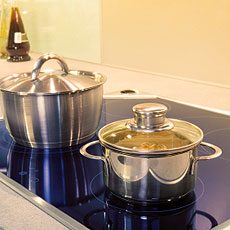
Glass-top electric range
Because ranges don’t have many moving parts (no motors, no belts), they tend to last a good long while-with one major exception. Damage done to a glass top, which can cost $300 to $400 to replace, makes the repair not worth the money. The most obvious way to break the glass is to bang a heavy pot on it-an impact break. But did you know that improper heating can also crack the glass? Using concave-bottomed pans can trap heat and cause the glass to crack. Using oversized pots and pans can do the same.
Repairman’s tip:
Use flat-bottomed pots and pans and make sure they are not larger than each burner.
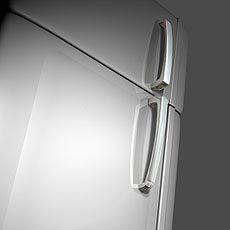
Refrigerator
By far the most expensive part on your refrigerator is the compressor, part of the sealed cooling system. The sealed system is often protected under a special five-year warranty, and it should last at least twice that long. But you’ve got to clean the dust that builds up on the refrigerator’s condenser coils, usually located behind a grille on the bottom of the fridge. If not, the compressor will be forced to work harder, and it may eventually overheat. If it fails prematurely-but after the warranty is void-you’ll likely have to replace the fridge, since a repair will be too costly.
Bonus tip: A full freezer is more efficient than an empty freezer, which has nothing to hold the cold. An efficient freezer not only prolongs the life of the compressor-and the fridge itself-but also saves energy. Fill your empty freezer shelves with bag ice, frozen veggies, or even plastic milk jugs filled with water.
Repairman’s tip:
Once a year (twice if you have furry pets), snap off the grille and clean the dust from the condenser coils using a vacuum cleaner and a condenser coil cleaning brush (an under-$10 accessory)-a tapered bottle brush on a plunger-length handle. Gently brush the bottom surface and in between the coils, then vacuum. Repeat until the coils are dust-free. Do not poke at the coils with a vacuum cleaner’s hard-plastic crevice tool. That could damage the coils.
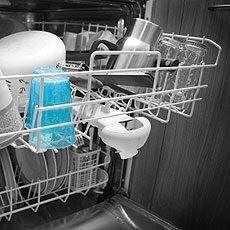
Dishwasher
Thanks to rust, dishwashers, like clothes washers, can be ruined by one small nick in the vinyl-coated rack. Once the metal inside begins to rust, you can’t stop it. The rust will stain your dishes until you replace either the rack or the machine. Replacing a dish rack can set you back one-quarter the price of a brand-new machine.
Repairman’s tip:
Hand-wash skillets, colanders, and other kitchenware with sharp edges. Never force a pan into a too-small space.